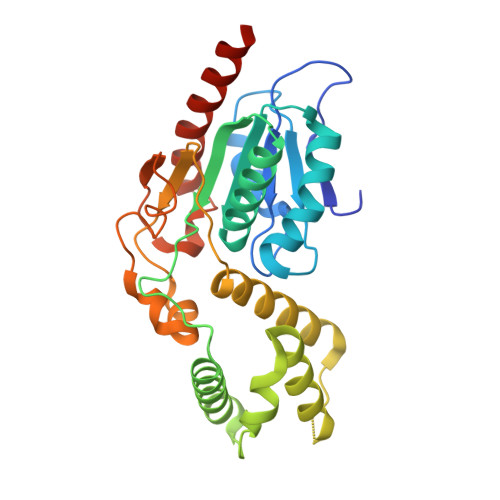Development of a Novel Lead that Targets M. tuberculosis Polyketide Synthase 13.
Aggarwal, A., Parai, M.K., Shetty, N., Wallis, D., Woolhiser, L., Hastings, C., Dutta, N.K., Galaviz, S., Dhakal, R.C., Shrestha, R., Wakabayashi, S., Walpole, C., Matthews, D., Floyd, D., Scullion, P., Riley, J., Epemolu, O., Norval, S., Snavely, T., Robertson, G.T., Rubin, E.J., Ioerger, T.R., Sirgel, F.A., van der Merwe, R., van Helden, P.D., Keller, P., Bottger, E.C., Karakousis, P.C., Lenaerts, A.J., Sacchettini, J.C.(2017) Cell 170: 249-259.e25
- PubMed: 28669536
- DOI: https://doi.org/10.1016/j.cell.2017.06.025
- Primary Citation of Related Structures:
5V3W, 5V3X, 5V3Y, 5V3Z, 5V40, 5V41, 5V42 - PubMed Abstract:
Widespread resistance to first-line TB drugs is a major problem that will likely only be resolved through the development of new drugs with novel mechanisms of action. We have used structure-guided methods to develop a lead molecule that targets the thioesterase activity of polyketide synthase Pks13, an essential enzyme that forms mycolic acids, required for the cell wall of Mycobacterium tuberculosis. Our lead, TAM16, is a benzofuran class inhibitor of Pks13 with highly potent in?vitro bactericidal activity against drug-susceptible and drug-resistant clinical isolates of M.?tuberculosis. In multiple mouse models of TB infection, TAM16 showed in?vivo efficacy equal to the first-line TB drug isoniazid, both as a monotherapy and in combination therapy with rifampicin. TAM16 has excellent pharmacological and safety profiles, and the frequency of resistance for TAM16 is ¡«100-fold lower than INH, suggesting that it can be developed as a new antitubercular aimed at the acute infection. PAPERCLIP.
Organizational Affiliation:
Department of Biochemistry and Biophysics, Texas A&M University, College Station, TX, USA.

















